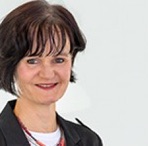Inequality: what should be done?
-
Overview
-
Background information11 Topics
-
What is inequality
-
History and presence of global inequality
-
Income inequality within countries and regions
-
Wealth inequality within countries and regions
-
Carbon Inequality
-
Vital inequality
-
Existential inequality
-
Drivers of inequality
-
What can be done about inequality?
-
How traditional welfare regimes deal with inequality
-
Tackling inequality in times of climate crisis
-
What is inequality
-
Endnotes
-
Glossary
-
References
-
Interactive learningDeepen your knowledge2 Topics
-
Training materialExercises for group activities6 Topics
Drivers of inequality
Drivers of inequality
Socioeconomic analysis insists that resource, vital and existential inequalities must not be reduced to individual characteristics, but that they are created and driven by social institutions (33) and caused by power relations. On a global scale, we have already described how neoliberal globalisation has profoundly shifted power relations and led to a diminishing share of labour income and rising inequality between different types of jobs. Another shift of power balance has taken place between private and public institutions through privatisation of public assets, reducing the possibilities to counter inequality through public programs (34). Whereas net private wealth increased sharply, net public wealth is now close to zero or even negative in most OECD countries.
Zooming closer into the drivers of inequality within a society, many studies have documented that inequality is inherited over generations in families, reinforcing class differences. This is most pronounced with respect to economic resources but also plays out in more subtle ways by socialisation in the educational system and the social networks of everyday life, leading to unequal social and cultural resources (or “capital” in the terminology of French sociologist Pierre Bourdieu)(35). One can think of multiple vicious circles between unequal means and unequal outcomes: between lack of income and health status, available time and education or between education and political influence. That said, a socioeconomic perspective of inequality does not only look at “traditional” economic institutions such as tax and labour market regulations but also takes into account fields of education, housing or health systems as drivers of inequality.
33 – Institutions are an often misunderstood term, in common language associated with “organisations”. Here, we use institutions more broadly as “…systems of established and embedded social rules that structure social interactions”. Hodgson, 2006, p.18, 34 – Alvaredo et al., 2018, 35 – Bourdieu, 1987.






